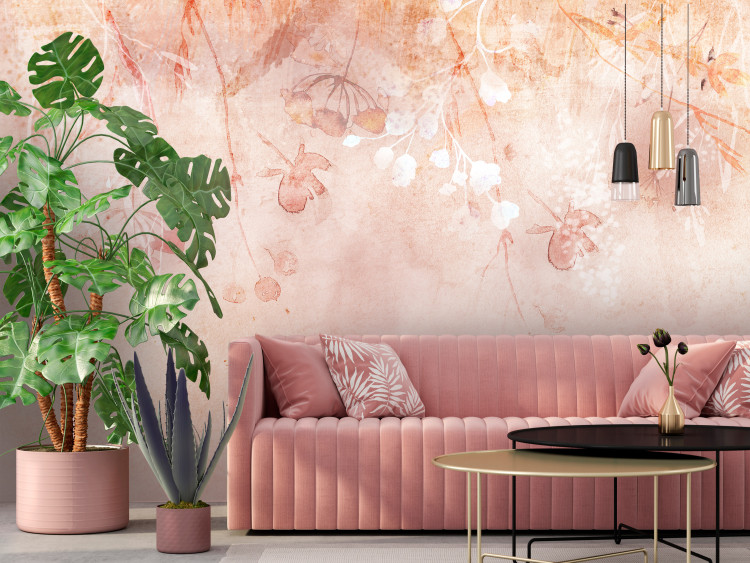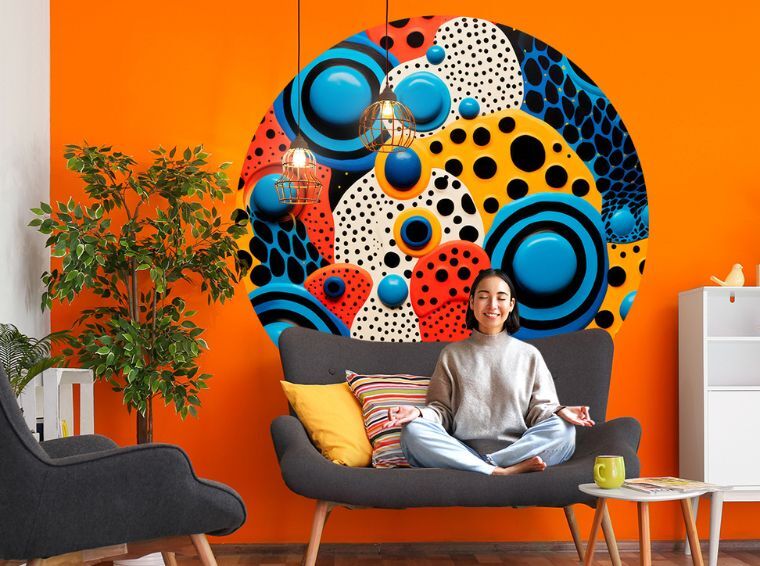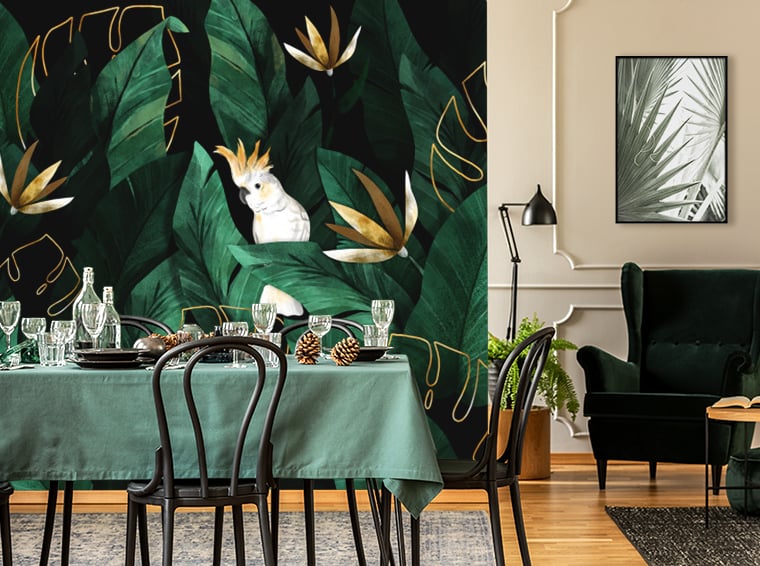China as a cradle of a unique style in arts, decoration and architecture has been an inspiration for artists for centuries. Designers, painters and architects have been fascinated by the Chinese culture over the centuries. Would you like to know how does it look in practice? Discover 6 ideas for introducing chinoiserie to your apartment and home!
Chinoiserie, in another words: "Made in China"
The chinoiserie style is French for "Chinese". Most people probably associate this word with products of questionable quality. Nothing could be more wrong, when it comes to chinoiserie. It describes a very specific style in interiors that appeared in Europe in the 17th century. It perfectly harmonized with the Rococo style, perfectly emphasizing the luxury and exquisite taste of the household. This style was most often chosen by the people of France, Germany and England.
Fascination with China was evident and present in interiors until the nineteenth century. The reasons for the expansion of exotic designs in Europe can be found in numerous economic and political endeavours to the Far East, as well as in the opening of many sea trade routes with the countries of Asia. It was then that the checks to Europe started, among others, of original Chinese ceramics or high-quality fabrics. It was then when people began to import Chinese ceramics, fabrics and furniture to Europe. These products were luxurious and not everyone could afford them.
Eclectic character of the chinoiserie style
The chinoiserie style was inspired not merely by China. It is a composition of various ideas taken from Japan and other Far East cultures. Among the most common motifs on decorations, the following can be distinguished:
- exotic and multicoloured birds and flowers,
- dragons,
- landscapes typical for the Far East,
- Asian people in traditional clothing.
A were very popular chinoiserie piece of furniture, inspired by the Far East influence is a room divider, as it introduces an oriental atmosphere to the space, unlike any other item. It is worth mentioning that the rooms decorated in this style were inspired and influenced by the Far Eastern style, and were not its complete reproduction. There was a neat eclecticism in the interiors, which neatly combined exotic accents with more modern elements of the arrangement.
Today, the eclectic chinoiserie style differs significantly from the one that was present in European interiors in the 17th or 18th centuries. It is not as popular as it used to be, but its manifestations are still present here and there. Chinoiserie uses a much more modern design that aims to introduce an oriental rather than luxurious atmosphere. Therefore, openwork chairs, bamboo fans or paintings depicting oriental genre scenes are welcome.

6 simple ideas for introducing chinoiserie style into your home
Despite the fact that the arrangements, inspired by Far Eastern interiors, have been somewhat superseded by modern and minimalist motifs, the chinoiserie style is still often used. We have prepared 6 simple ideas for you on how to introduce a touch of oriental and sophisticated notes to your interior.
Idea 1: Chinese decorative motifs on wallpapers and wall murals
If you are thinking about introducing a touch of the Orient to your room, the first thing you should look at are wallpapers and wall murals with Chinese ornaments. Wall decoration is one of the most important elements in the chinoiserie style. It is good if the wallpapers feature motifs that directly refer to the Far East. The most obvious determinant will be a wall mural depicting a Chinese or Japanese landscape. If you want to introduce only a subtle oriental touch to your interior, you can choose Orient Wall Murals in more subdued colours showing characteristic flora or ornamentation.
Idea 2: Chinoiseries in paintings and posters
Another way to introduce Far East accents is to use wall decorations in the form of paintings or posters with oriental motifs. Their selection is wide enough to be sure that you will find the one that best suits the interior design. In bright spaces maintained in a minimalist or romantic style, the painting Garden of Peace, and Symmetrical waves. People fascinated by the Orient will surely like posters or paintings depicting mandalas or the Buddha. An interesting idea might be also a DIY painting Black Geisha , which, created by ourselves, will introduce a unique atmosphere into the interior and make it even more unique and personal.
Idea 3: Chinoiserie-style screens
Room dividers are undoubtedly the most recognizable elements of Japanese style, and therefore chinoiserie. The traditional, portable and foldable Japanese screen is a byōbu. It consists of several panels on which, originally, covered in paintings. Japanese screens protect against wind or sun, and also give privacy. Their use in a house or apartment will allow you to emphasize the intimate atmosphere in the bedroom, and also allow you to separate zones in it.
These types of decorations are available in many configurations. In small rooms, three-part room dividers are perfect, and in the case of much larger spaces, you can afford screens consisting of up to five parts. An example of this type of decoration can be a screen Pond House.
Idea 4: Eclectic accessories - lanterns, porcelain, exotic plants
When deciding to use an eclectic arrangement in your interiors, don't forget about accessories.
- Chinese lanterns - they will perfectly emphasize the romantic atmosphere, and when hung from the ceiling, they will illuminate the whole room with a soft light. They are recommended for the bedroom, children's room and terrace.
- Fans - made of wood or paper, they will be a subtle decoration referring to the oriental atmosphere of the Far East. Hanging on the wall, they will emphasize the chinoiserie style, and more precisely its finesse, craftsmanship and originality.
- Chinese porcelain - it will work primarily in the kitchen, dining room and living room. Traditional Chinese tea served in will be even better. When not in use, it can also be nicely displayed on a sideboard or in a shop window. When buying porcelain, one cannot forget about matching vases, which can contain, for example, peonies - the characteristic flowers of China and Japan. However, it should be remembered that original Chinese porcelain can turn out to be a considerable expense. It is better than to choose faience, which is confusingly similar to it, but much cheaper.
- Exotic plants - everyone knows perfectly well that it is the vegetation that best emphasizes the atmosphere and character of the room. For an oriental interior, it is best to go for bonsai trees, Japanese fatsja, bamboo, monstera or large palm trees. Orchids will also work great in minimalist interiors. It is best that the plants are placed in special casings with resin decorations on their surface. Oriental lacquer, the technique of making this type of ornaments, is incredibly popular in Asia.

Idea 5: Decorated chinoiserie style furniture
The chinoiserie style loves openwork pieces. It is good to combine them with solid and carefully made furniture. Drawer chests, tables and chinoiserie-style wardrobes are products made with the greatest attention to the smallest detail. When creating an oriental interior, it is worth focusing on non-uniform colour, solid and exotic wood, as well as characteristic fittings. The oriental living room must have a coffee table with a richly decorated top and golden accessories, and the bedroom has an openwork boho-style chest of drawers.
Idea 6: Fabrics with oriental motifs
Fabrics with oriental motifs are also decorations that will allow you to introduce an oriental atmosphere into the interior. They can be used to cover lounge furniture, chairs and armchairs. In the bedroom, you can put on an oriental bedspread, curtains or pillows with Asian motifs. The atmosphere of the Orient can also be emphasized by the use of carpets and tablecloths.
The chinoiserie style introduces a breath of oriental vibe into the room. It is an arrangement in which people who like non-obvious decor ways will find themselves. Taking inspiration from the Far East will certainly allow you to create an original, fresh and surprising interior.










